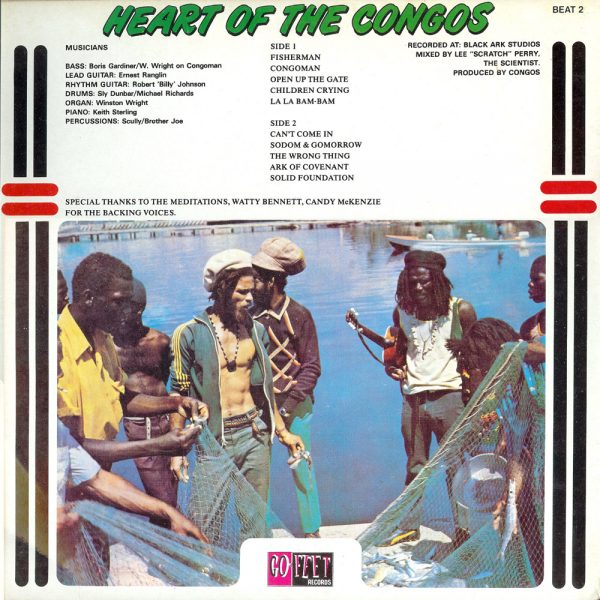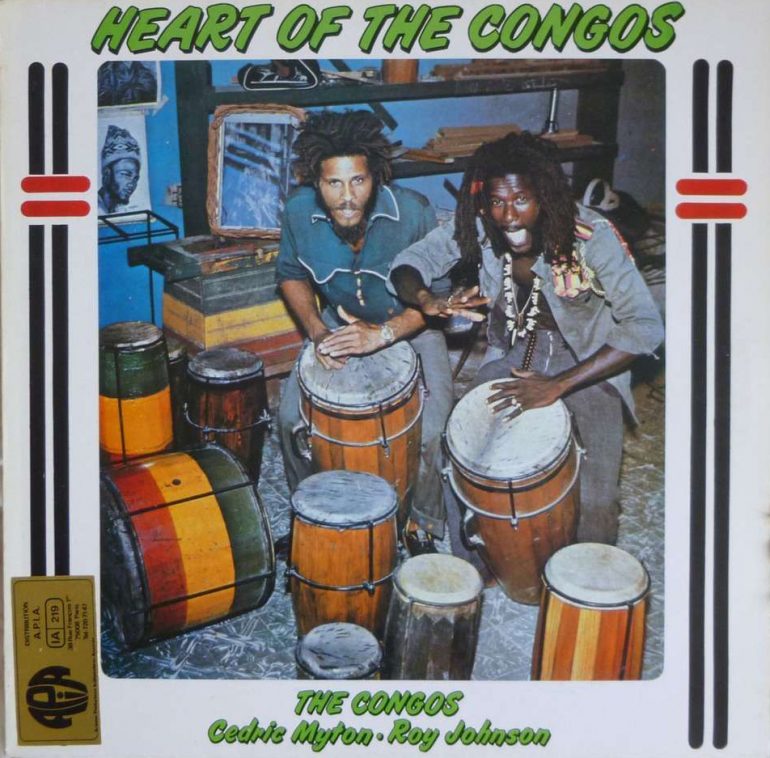The cover image of vocal duo Roy Ashanti and Cedric Myron amidst an array of congos symbolises the LP’s musical framework of a percussion-heavy backbone intertwining with a finessed vocal harmony. These two elements are unified by a layer of shrewd and visionary dub production which in turn paves way for a new incarnation of reggae music. The Congos’ instantly recognisable combination of the mesmerising harmony between Ashanti’s tenor and the piercing falsetto of Myton is supported on this album by baritone Watty Burnett, creating an enriched soundscape to grip the listener into songs of spirituality, suffering, faith and resistance.
An analysis of the reverse side of the sleeve denotes an all-star line-up of musical contributors, including heavyweights of ska, dub, rocksteady and reggae such as Ernest Ranglin, Sly Dunbar, Gregory Isaacs and members of The Heptones. Yet in 1977 they were in Black Ark Studios at the command of Lee Scratch Perry, creating a piece of work which ranks right up their with this genius producer’s finest ever records. Perry manages to harness his eccentricity whilst utilising his experience of working under Coxsone Dodd at Studio One to produce a measured and forceful delivery of a new direction of dub music.

Following years of industry dispute and setbacks after its limited release in 1977, it wasn’t until a 1997 Blood & Fire reissue that justice for roots aficionados was served as it finally became distributed to the wider world on a mass scale. As such, its commercial success recounts the unfortunately too familiar tale of exerting greater musical influence and ingenuity than its immediate sales figures suggested.
A bookmark in the evolution of reggae, the shift in focus from the off-beat chord progression in earlier ska and rocksteady is softened as the bass groove takes on greater responsibility in guiding the arrangements, whilst instrumental breaks comprise of percussive and reverb variations as oppose to melodic instrumental solos. The wails and pleads during “Children Crying” masterfully uses vocal layering to encapsulate sentiments of spirituality and optimism amidst hardship, whilst highly infectious hooks such as the rows during “Fisherman” and the knocks during “Cant Come In” are a testament to the songwriting of Myron and Johnson.
Ultimately, its the multifaceted percussion locked into a forceful bass which sets the foundations for a harmonised vocal showcase to flourish in singing of the spiritual, social and cultural climate of 1970s rural Jamaica. Sprinkled with the dub magic of a composed yet adventurous Lee Perry, this LP goes on to arguably set the blueprint for what is now widely recognised as roots reggae.
By Julian Ball Rodriguez

